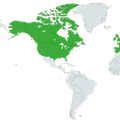
Quick google search shows that China has its own Quartz mines, so I’m not sure if those are unsuitable for certain semiconductors or if the use of “world” here just means 

Quick google search shows that China has its own Quartz mines, so I’m not sure if those are unsuitable for certain semiconductors or if the use of “world” here just means 
Quartz is pretty common as a digital oscillator but it’s possible to use other methods. Certain iPhones used a different oscillator that are sensitive to atmospheric Helium.
Not sure where else in the supply chain it’s needed, and how easily it is to swap quartz oscillators for other components in existing designs.
i have no idea what an oscillator gizmo entails
Your computer’s chips all have a clock rate, which controls how fast these circuits switches from positive to negative voltages. These clock rates are synchronised using an oscillator, often made of quartz.
By driving the clock rates from a single oscillator, multiple components can have different speeds but can stay in sync with each other, which is how we can transfer data from different components seamlessly.
An oscillator’s output goes up and down. They can be sine waves (called harmonic oscillators), or any kind of wave. The ones used in digital circuitry make square waves.
MEMS are also made of silicon.
quartz oscillators were basically the first MEMS.(i wrote that but actually its not true lol. something else cool is saw filters which kind of build on the concept of quartz oscillators btw) cool fact: the reason helium kills MEMS is because the atoms are so small that they can diffuse their way through the wall of the device, filling it up with helium and the air resistance then stops it from working!deleted by creator